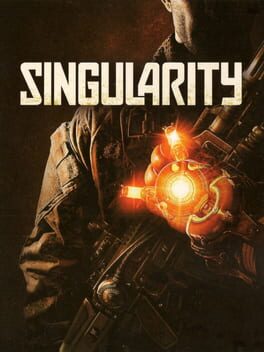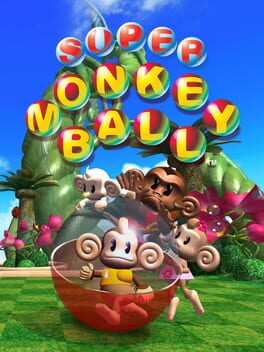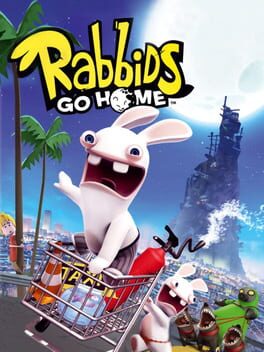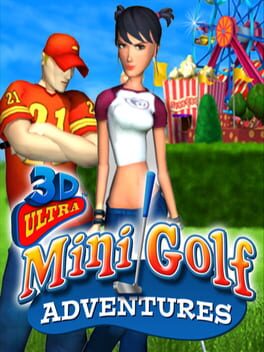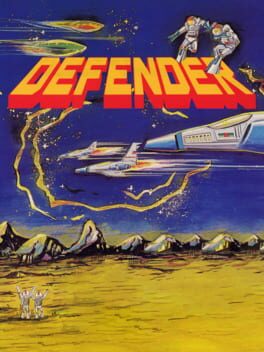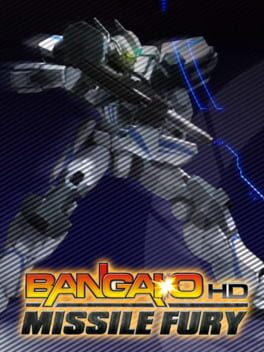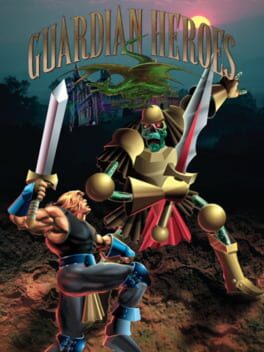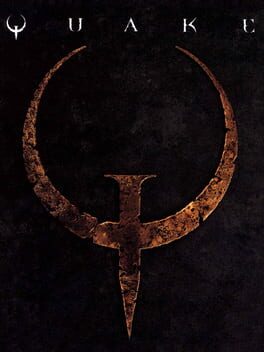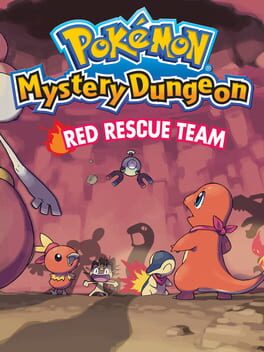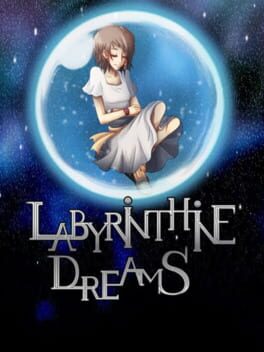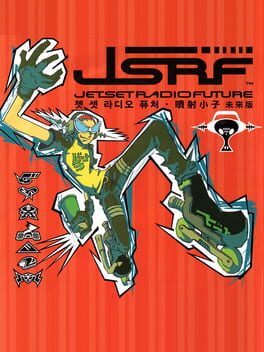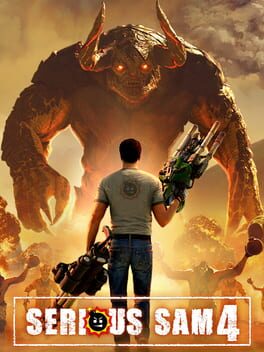ShyGuy014
2010
---Finding games considered to be "Hidden Gems" is pretty daunting, as everyone has their own definitions and opinions on what gets this hallowed status. One game that has had a stronger sense of Hidden Gem has been Singularity here, which is often propped up by the Xbox 360 crowd. That isn't for no good reason. A - This is one of the last games developed by legendary FPS studio Raven Software, who up to this point has had a fantastic run of games even in the 2000s with the Wolfenstein reboot, Quake 4, X-Men Origins, and Marvel Ultimate Alliance. Everything they would do after Singularity would come to as little as a footnote credit in subsequent Call of Duty games.
---B - Many would see Singularity as a breath of fresh air amongst the late 2000s FPS landscape. It bares reminding that during this time FPS's had big bombastic set-pieces, with red tinted screens, limited arsenals, cover mechanics, shoe-horned campaigns that gave way to multiplayer instead, and more. By contrast, Singularity's health bars and mechanics are welcome relief from that. Heck, you get a minigun as a regular weapon in this game. Any other game during this time would relegate that to a gimmick item for one mission.
---Singularity also very much wears it's classic FPS influences on it's sleeves. You've got audio logs via Bioshock, Horrorcore via F.E.A.R., and even a Gravity-Gun esc glove via Half-Life 2. That last item you can use to also shoot balls that slow time, or force pushes to knock back enemies. In that sense, Singularity gives the player some nice options during firefights. It's also got upgrade points to the player and weapons, which fills a nice secrets quota, though these aren't as interesting to get as what you would find in a Serious Sam or Duke Nukem game.
---Singularity also starts strong with an intriguing story about Russian experiments camps messing with a strange element. However, once you reach the big twist at the end of the first leg of the game, things go from interesting to predictable in my opinion. It's also when the game's weak feeling gun weaponry starts to feel stale. For a majority of Singularity, there are these little nuggets where you think it might surprise you, but Raven Software never really fully capitalizes on these moments.
---It doesn't help that the game was made with Unreal Engine 3. While Unreal has a certain pedigree now, back then it's murky textures, cheap effects, and shiny bump-mapping was an eyesore, and it's only gotten worse with time. Raven Software alleviates this with some good environment design, but you have to look past Unreal 3's awful fidelity to admire the props. Everything else about Singularity is kind of forgettable. It's flow is fine, it's music is there, the voice-acting is ok, and the game throws in something new every once in awhile to keep things fresh. However, I think Singularity's "gen" status isn't very earned. There isn't much impressive here nowadays. In the future it will probably stay hidden. - [05/10]
---B - Many would see Singularity as a breath of fresh air amongst the late 2000s FPS landscape. It bares reminding that during this time FPS's had big bombastic set-pieces, with red tinted screens, limited arsenals, cover mechanics, shoe-horned campaigns that gave way to multiplayer instead, and more. By contrast, Singularity's health bars and mechanics are welcome relief from that. Heck, you get a minigun as a regular weapon in this game. Any other game during this time would relegate that to a gimmick item for one mission.
---Singularity also very much wears it's classic FPS influences on it's sleeves. You've got audio logs via Bioshock, Horrorcore via F.E.A.R., and even a Gravity-Gun esc glove via Half-Life 2. That last item you can use to also shoot balls that slow time, or force pushes to knock back enemies. In that sense, Singularity gives the player some nice options during firefights. It's also got upgrade points to the player and weapons, which fills a nice secrets quota, though these aren't as interesting to get as what you would find in a Serious Sam or Duke Nukem game.
---Singularity also starts strong with an intriguing story about Russian experiments camps messing with a strange element. However, once you reach the big twist at the end of the first leg of the game, things go from interesting to predictable in my opinion. It's also when the game's weak feeling gun weaponry starts to feel stale. For a majority of Singularity, there are these little nuggets where you think it might surprise you, but Raven Software never really fully capitalizes on these moments.
---It doesn't help that the game was made with Unreal Engine 3. While Unreal has a certain pedigree now, back then it's murky textures, cheap effects, and shiny bump-mapping was an eyesore, and it's only gotten worse with time. Raven Software alleviates this with some good environment design, but you have to look past Unreal 3's awful fidelity to admire the props. Everything else about Singularity is kind of forgettable. It's flow is fine, it's music is there, the voice-acting is ok, and the game throws in something new every once in awhile to keep things fresh. However, I think Singularity's "gen" status isn't very earned. There isn't much impressive here nowadays. In the future it will probably stay hidden. - [05/10]
2001
---I think every college student's favorite video game is Super Monkey Ball. After all, it's got a dirt simple premise with fun looking stages yet hard to master gameplay. For those who are unfamiliar with Super Monkey Ball, it's a Sega published platforming game made by Amusement Vision where you play as a Monkey in a Gashapon capsule trying to collect bananas and reach the goal with an alotted amount of time. The kicker is that to move, you use a control stick or track ball to tilt the stages. This is widely different from normal platformers where input influences the player character.
---What this control scheme does is allow for some extremely engaging gameplay. Monkey Ball's physics are very on point, making the act of moving the Monkey feel very fluid. You can also skip parts of stages if you're skilled enough. Amusement Vision even put in minigames and unlockables to give players goals to work towards. The aesthetic of Super Monkey Ball is very vibrant, yet very readable. I especially love the inclusion of grid textures here. I also like the mini-map, which helps with spatial awareness.
---That being said, I don't think Super Monkey Ball is perfect. It's camera for one is also influenced by input, which can be a real pain when you're trying to line up to thin pieces of environment. I also thought the lives and continue system wasn't necessary. If anything, it acts to prolong the game. Same goes for the replays you have to skip or watch everytime you die in the game. Finally, the expert stages aren't great, especially with their reliance on precise input, which Super Monkey Ball does not support. Still, I think this game deserves it's legacy. It's an extremely fun and welcoming platformer that I can see myself coming back to in the future. - [08/10]
---What this control scheme does is allow for some extremely engaging gameplay. Monkey Ball's physics are very on point, making the act of moving the Monkey feel very fluid. You can also skip parts of stages if you're skilled enough. Amusement Vision even put in minigames and unlockables to give players goals to work towards. The aesthetic of Super Monkey Ball is very vibrant, yet very readable. I especially love the inclusion of grid textures here. I also like the mini-map, which helps with spatial awareness.
---That being said, I don't think Super Monkey Ball is perfect. It's camera for one is also influenced by input, which can be a real pain when you're trying to line up to thin pieces of environment. I also thought the lives and continue system wasn't necessary. If anything, it acts to prolong the game. Same goes for the replays you have to skip or watch everytime you die in the game. Finally, the expert stages aren't great, especially with their reliance on precise input, which Super Monkey Ball does not support. Still, I think this game deserves it's legacy. It's an extremely fun and welcoming platformer that I can see myself coming back to in the future. - [08/10]
2009
---In terms of creativity, uniqueness, and general energy, I don't think it gets any better than Ubisoft Montpellier's Rabbids Go Home. Up until this point, the Rabbids have embodied the chaotic annoying beasts that mess up rigid systems and cause havoc. They've also only appeared in minigame compilations a la Rayman Raving Rabbids, which are fine games, but clearly don't use the Rabbids to their fullest potential. That wouldn't come to fruition until their first solo effort here, which pushes the mutated mascots center stage.
---The idea here is that these Rabbids don't belong to the human world. Literally, they come from the moon, and at the beginning of Go Home the Rabbids grow home-sick. Their solution is to raid the metropolitan city outside their scrapyard for "stuff." Anything they can get their paws on to build a gigantic pile upwards towards their destination.
----What follows are levels that take place in settings such as hospitals, shopping malls, and airports. Rabbids Go Home isn't very subtle about it's "Bull in a China Shop" characters, and even critiques and parodies capitalist culture with radio voices, use of one-hit wonder songs, and the humans who seem shallow. As for the gameplay itself, you play as two Rabbids with a Shopping Cart. The goal is to go through each level collecting "Stuff."
---There are two kinds of stuff. The XS Stuff is your smaller objects strewn throughout the environments. Then there is an XL stuff like a giant hospital bed or boiler. Overall this accounts for 401 items in total that must be collected in each level. Your mechanics include a shopping cart which doesn't turn on dime, but can skid into a boost, a cannonball Rabbid, and a destructive scream that can even stun the most ferocious dogs.
---What results is a game that takes clear influence from past titles such as Katamari and Super Mario 64, but clearly puts it's own unique spin on the platforming collectathon formula. The art style is especially cartoony and colorful with stick people, and toon-like shading. I also love the original soundtrack, which uses a Moldovian Brass Band. A perfect fit for the Rabbids.
---Now, for all the praises I can throw at this game, I don't think it's perfect. The skill curve isn't as gradual as I'd like it to be. There is a bit of a jump in platforming difficulty in the later levels of the game. Meanwhile on the other side of that coin are the exterminator enemy types which are way too easy to dispense. There are harder variants of these, but they can be combo'd very easily. I also don't like how dying can just reset your item count at certain points. I imagine that would make completing the game a real pain. The framerate of Go Home doesn't consistent either, at least not on the Wii. Finally, Rabbids Go Home does seem to run out of ideas for XL items and settings near it's end. There's a lot of familiar ground that's covered, which I find disappointing.
---Regardless, I still think this is one of the most slept on titles of the Wii-era, utilizing motion controls extremely well. I even love the idea that there's a Rabbid living inside your remote which you can customize and thrash around. The premise is wonderfully silly, the gameplay is addictively brilliant, and the style is both self-aware and critical. I love this game to death and I hope it gets it's just dues as one of Ubisoft's most unique titles. - [08/10]
---The idea here is that these Rabbids don't belong to the human world. Literally, they come from the moon, and at the beginning of Go Home the Rabbids grow home-sick. Their solution is to raid the metropolitan city outside their scrapyard for "stuff." Anything they can get their paws on to build a gigantic pile upwards towards their destination.
----What follows are levels that take place in settings such as hospitals, shopping malls, and airports. Rabbids Go Home isn't very subtle about it's "Bull in a China Shop" characters, and even critiques and parodies capitalist culture with radio voices, use of one-hit wonder songs, and the humans who seem shallow. As for the gameplay itself, you play as two Rabbids with a Shopping Cart. The goal is to go through each level collecting "Stuff."
---There are two kinds of stuff. The XS Stuff is your smaller objects strewn throughout the environments. Then there is an XL stuff like a giant hospital bed or boiler. Overall this accounts for 401 items in total that must be collected in each level. Your mechanics include a shopping cart which doesn't turn on dime, but can skid into a boost, a cannonball Rabbid, and a destructive scream that can even stun the most ferocious dogs.
---What results is a game that takes clear influence from past titles such as Katamari and Super Mario 64, but clearly puts it's own unique spin on the platforming collectathon formula. The art style is especially cartoony and colorful with stick people, and toon-like shading. I also love the original soundtrack, which uses a Moldovian Brass Band. A perfect fit for the Rabbids.
---Now, for all the praises I can throw at this game, I don't think it's perfect. The skill curve isn't as gradual as I'd like it to be. There is a bit of a jump in platforming difficulty in the later levels of the game. Meanwhile on the other side of that coin are the exterminator enemy types which are way too easy to dispense. There are harder variants of these, but they can be combo'd very easily. I also don't like how dying can just reset your item count at certain points. I imagine that would make completing the game a real pain. The framerate of Go Home doesn't consistent either, at least not on the Wii. Finally, Rabbids Go Home does seem to run out of ideas for XL items and settings near it's end. There's a lot of familiar ground that's covered, which I find disappointing.
---Regardless, I still think this is one of the most slept on titles of the Wii-era, utilizing motion controls extremely well. I even love the idea that there's a Rabbid living inside your remote which you can customize and thrash around. The premise is wonderfully silly, the gameplay is addictively brilliant, and the style is both self-aware and critical. I love this game to death and I hope it gets it's just dues as one of Ubisoft's most unique titles. - [08/10]
---A minigolfing video game is something I've always loved to indulge in. There's something so satisfying about wacky graphics, power-ups, and lining up shots at your pace. Thus, once I saw YouTube personalities Achievement Hunter play 3D Minigolf Adventures Deluxe when I was young, I made it a goal to one day play through the game myself. Now once I have, I can say with certainty that it's "fine." It's not great, but it's not terrible. 3D Minigolf Adventures Deluxe is a perfectly sufficient minigolf video game.
---The bright, colorful, cartoony aesthetics are an instant hook for me. I also love the variety of courses. They're a little cliche, from "Wild West" to "Circus." There's not anything here that's going to blow minds, but Wakano's penchant for making quaint, fun looking environments shines through. I also love the mechanics, and how well they execute. The golfing physics feel great, the hole-in-ones can be clever and tricky, and the game as a whole runs great on PC.
---That being said, there isn't much to do in the game besides play single player "tournaments" where you drive games against AI you don't see. Minigolf Adventures is definitely a game you want to play with friends. Sadly the software only allows for local play. I also found the character variety to be a bit disappointing, and weird. Like, they're all so unhappy. Why? Finally, the free-look camera with the mouse I think could use some tweaking. It's a bit sensitive, and whenever you start moving your mouse the camera likes to jolt a bit. Overall though, this a is minigolf video game, and a serviceable one at that. - [05/10]
---The bright, colorful, cartoony aesthetics are an instant hook for me. I also love the variety of courses. They're a little cliche, from "Wild West" to "Circus." There's not anything here that's going to blow minds, but Wakano's penchant for making quaint, fun looking environments shines through. I also love the mechanics, and how well they execute. The golfing physics feel great, the hole-in-ones can be clever and tricky, and the game as a whole runs great on PC.
---That being said, there isn't much to do in the game besides play single player "tournaments" where you drive games against AI you don't see. Minigolf Adventures is definitely a game you want to play with friends. Sadly the software only allows for local play. I also found the character variety to be a bit disappointing, and weird. Like, they're all so unhappy. Why? Finally, the free-look camera with the mouse I think could use some tweaking. It's a bit sensitive, and whenever you start moving your mouse the camera likes to jolt a bit. Overall though, this a is minigolf video game, and a serviceable one at that. - [05/10]
1981
---Back in the early arcade era of video gaming, the medium was still getting it's footing. A lot of the greatest and most influential games come from this era, but that doesn't mean most of them have aged particularly well. Unfortunately I think Defender falls into this group, which I'm disappointed by. I was initially excited to play this game as it comes from the mind of Eugene Jarvis, co-creator of one of my favorite early arcade titles: Robotron 2084. However, once I picked up this game and started playing it, I knew I would come to dread the coming playthroughs.
---Now, for context, part of Defender's legacy is it's difficulty. This is one of the games that convinced developers at the time that players were seeking more challenging and complex experiences. While I do think some of Defender's challenge can be engaging, like protecting the citizens on earth and surviving waves of aliens, there's also a lot that makes me sigh. Mostly because of the kind of stuff that comes from early, rudimentary design, or the quarter munching goals of cabinet manufacturers. Things like shots coming at a pace faster than you can react to them, or ships that are programmed to smash into you at a moment's notice. This kind of stuff is what really bogged down the experience of Defender for me.
----Still, I really like the visuals here. The eccentric, rainbow hue visuals Robotron would become known for show up here. The ship itself looks great, especially it's thruster effect. I also love the trails of the bullets, and the explosions of objects. I even like the touch of the illusion of elevation on the ground below. And for what it's worth, the ship in Defender has an interesting control behavior where it's not quite responsive, causing you to think before you turn. Still, with Defender's want of super-precise shots and look-ahead camera, there are more things that hamper this classic arcade experience. I don't think many modern audience members will want to replay this for very long. - [04/10]
---Now, for context, part of Defender's legacy is it's difficulty. This is one of the games that convinced developers at the time that players were seeking more challenging and complex experiences. While I do think some of Defender's challenge can be engaging, like protecting the citizens on earth and surviving waves of aliens, there's also a lot that makes me sigh. Mostly because of the kind of stuff that comes from early, rudimentary design, or the quarter munching goals of cabinet manufacturers. Things like shots coming at a pace faster than you can react to them, or ships that are programmed to smash into you at a moment's notice. This kind of stuff is what really bogged down the experience of Defender for me.
----Still, I really like the visuals here. The eccentric, rainbow hue visuals Robotron would become known for show up here. The ship itself looks great, especially it's thruster effect. I also love the trails of the bullets, and the explosions of objects. I even like the touch of the illusion of elevation on the ground below. And for what it's worth, the ship in Defender has an interesting control behavior where it's not quite responsive, causing you to think before you turn. Still, with Defender's want of super-precise shots and look-ahead camera, there are more things that hamper this classic arcade experience. I don't think many modern audience members will want to replay this for very long. - [04/10]
---Earlier this year, the sequel to Bangai-O, Bangai-O Spirits, surprised me with it's amount of variety and tension. It's still one of my favorite games I've played this year. Thus I was highly anticipating playing the sequel to that game: Bangai-O HD: Missile Fury. I was hoping for even more improvements and variety in this installment, as well as an expectation of a visual improvement here. Well, I did get those things sort of. If you would like some Bangai-O, then this is definitely that, but I'm afraid it doesn't amount to much more. It's competent, and fun, but it's more of the same of what we got in Spirits.
---That being said, there are some welcome additions and improvements here that make this something like the "Half-Life 2: Episode 1" of Bangai-O. You now gain back health for every enemy you kill. The freeze weapon is now bound into the dash skill. Speaking of: the big dash feature is amazing and very satisfying to pull off. There's also new weapons like the Fast bullets and the Wide bullets, though it seems Bangai-O favors it's Bounce and Homing weapons more.
---Which does start to bring me to my complaints. You can't choose weapons right at the start anymore. Instead you have to break boxes in order to retrieve them, and even then they go away after awhile so you better hope you see them in Bangai-O HD's hectic fire fights. I also didn't like how much Treasure has brought over and implemented from Spirits into Missile Fury. The tilemaps and background and shared heavily between the game to the point where Missile Fury lacks identity. You can also tell Missile Fury had a bit of a lower budget as Dr. Ban is now a flat static sprite that looks like he's still in the concept art stage. Overall I think Bangai-O HD proves how unique and interesting the series as a whole is, and how underrated it has gone, but I don't think this will blow the minds of long-time fans either. It's a Bangai-O game, and that's it. - [07/10]
---That being said, there are some welcome additions and improvements here that make this something like the "Half-Life 2: Episode 1" of Bangai-O. You now gain back health for every enemy you kill. The freeze weapon is now bound into the dash skill. Speaking of: the big dash feature is amazing and very satisfying to pull off. There's also new weapons like the Fast bullets and the Wide bullets, though it seems Bangai-O favors it's Bounce and Homing weapons more.
---Which does start to bring me to my complaints. You can't choose weapons right at the start anymore. Instead you have to break boxes in order to retrieve them, and even then they go away after awhile so you better hope you see them in Bangai-O HD's hectic fire fights. I also didn't like how much Treasure has brought over and implemented from Spirits into Missile Fury. The tilemaps and background and shared heavily between the game to the point where Missile Fury lacks identity. You can also tell Missile Fury had a bit of a lower budget as Dr. Ban is now a flat static sprite that looks like he's still in the concept art stage. Overall I think Bangai-O HD proves how unique and interesting the series as a whole is, and how underrated it has gone, but I don't think this will blow the minds of long-time fans either. It's a Bangai-O game, and that's it. - [07/10]
1996
-------Guardian Heroes is probably one of the most interesting side-scrolling brawlers I've ever played. It seemed like no matter when I picked it up, it was always showing me something new. It's RPG elements are fascinating, it's character designs are unique, and it's story is surprisingly complex and sweeping. I also love how any character from the story-mode can be played through the arcade and versus modes. The gallery offers a open glance into how much density Guardian Heroes offers. 30 story-missions, 90 characters, and a great soundtrack make up this display. The fighting mechanics are pretty deeps with button combos and weighted attacks. There's also a magic system, and even character classes worked into the fold. I imagine Guardian Heroes would be a fantastic multiplayer expierence.
-------However, even with this wondrous variety, I feel as if Guardian Heroes falters in it's key areas. For one, I don't think it's juggles any of it's systems extremely well. There are clear repeat scenes within the story missions without much variation. The karma system is under-baked with it being hard to be any kind of “evil.” Some of the story characters felt better to play than others. In fact one, Han, is the canonical hero of the narrative, and is the only character that can get a “boost” in stats from one specific story path. Finally, I feel as if the gameplay in general is just too chaotic. Bosses are too tough and responsive, the AI can easily out-number and juggle you, and it is very easy to lose your place on the screen. Regardless, I think this Sega Saturn cult-classic is still worth playing. Treasure always seems to surprise me, and this is one of their most sensory overload games I've played to date. For better, and for worse. - [06/10]
-------However, even with this wondrous variety, I feel as if Guardian Heroes falters in it's key areas. For one, I don't think it's juggles any of it's systems extremely well. There are clear repeat scenes within the story missions without much variation. The karma system is under-baked with it being hard to be any kind of “evil.” Some of the story characters felt better to play than others. In fact one, Han, is the canonical hero of the narrative, and is the only character that can get a “boost” in stats from one specific story path. Finally, I feel as if the gameplay in general is just too chaotic. Bosses are too tough and responsive, the AI can easily out-number and juggle you, and it is very easy to lose your place on the screen. Regardless, I think this Sega Saturn cult-classic is still worth playing. Treasure always seems to surprise me, and this is one of their most sensory overload games I've played to date. For better, and for worse. - [06/10]
1996
[REPLAY] Super Mario 64 is one of the quintessential 3D platformers. It set the stage for a myriad of fantastic game design practices that are still used to this day. It's a game that almost effortlessly brought an already established legend into new axes. There are almost no other 3D platformers that match or surpass this. While I don't think Mario 64 is flawless, I recognize it as one of the founding pillars of video history. It's a game as important as the Super Mario Bros. of 11 years before it. From it's wide range of movement options with Mario, to it's dynamic environments that change from moment to moment, to it's sand-boxy progression that almost allow to progress as if wading through water, Super Mario 64 is extremely fun and satisfying.
---------That being said, I've seen there has been a backlash against it. Part of that backlash I can agree with. Mario's movement is more momentum based then I remember, and can cause some frustration. The camera system can show it's age, especially in the later levels of the game. Finally, some stars can be outright headache inducing to get. However, to say that Mario 64 is “bad” or that it has “aged like milk” is to exercise insanity. Super Mario 64 is a triumph of 3D gaming, and it still plays like it. So long-jump to your nearest store, and pick up this Nintendo classic. - [08/10]
---------That being said, I've seen there has been a backlash against it. Part of that backlash I can agree with. Mario's movement is more momentum based then I remember, and can cause some frustration. The camera system can show it's age, especially in the later levels of the game. Finally, some stars can be outright headache inducing to get. However, to say that Mario 64 is “bad” or that it has “aged like milk” is to exercise insanity. Super Mario 64 is a triumph of 3D gaming, and it still plays like it. So long-jump to your nearest store, and pick up this Nintendo classic. - [08/10]
2002
Super Mario Sunshine is frustrating, overlong, and frankly feels unfinished.
Full Review: https://youtu.be/LBMQ7X8EA10
Full Review: https://youtu.be/LBMQ7X8EA10
1996
Quake, with it's horror-tinged Lovecraftian worlds, still holds up as a fantastically well-made twitch shoot. It's just a shame that it still has it's rune-glitch.
Full Review: https://youtu.be/xmyGYAPdz1o
Full Review: https://youtu.be/xmyGYAPdz1o
Chunsoft's Pokemon Mystery Dungeon: Red Rescue Team is the culmination of their efforts to make a fun and accessible Rogue-Like
Full Review: https://youtu.be/yv8xCDPlKio
Full Review: https://youtu.be/yv8xCDPlKio
2015
Labyrinthine tries it hand at serious and relatable subject matter, but it's patronizing solution and annoying puzzles make it one of the worst games I've played this year.
Full Review: https://youtu.be/HfIPH_s818o
Full Review: https://youtu.be/HfIPH_s818o
2002
A tour de force of Sega's catalogue, Jet Set Radio Future is an improvement to it's predecessor on all fronts, while still being something that's uniquely it's own. Crank up the volume and wake up the neighbors!
Full Review: https://youtu.be/Az9uGdHpLR4
Full Review: https://youtu.be/Az9uGdHpLR4
2020
Serious Sam 4 is the return to form the franchise desperately needed, but it's not without it's faults.
Full Review: https://youtu.be/M8BnhxEF6iM
Full Review: https://youtu.be/M8BnhxEF6iM
1989
Crack Down is an extremely interesting top-down shooter that's ahead of the curve on a lot of things, but it's hampered by some pretty bad design.
Full Review: https://youtu.be/Y6xdFWA6Jpo
Full Review: https://youtu.be/Y6xdFWA6Jpo
